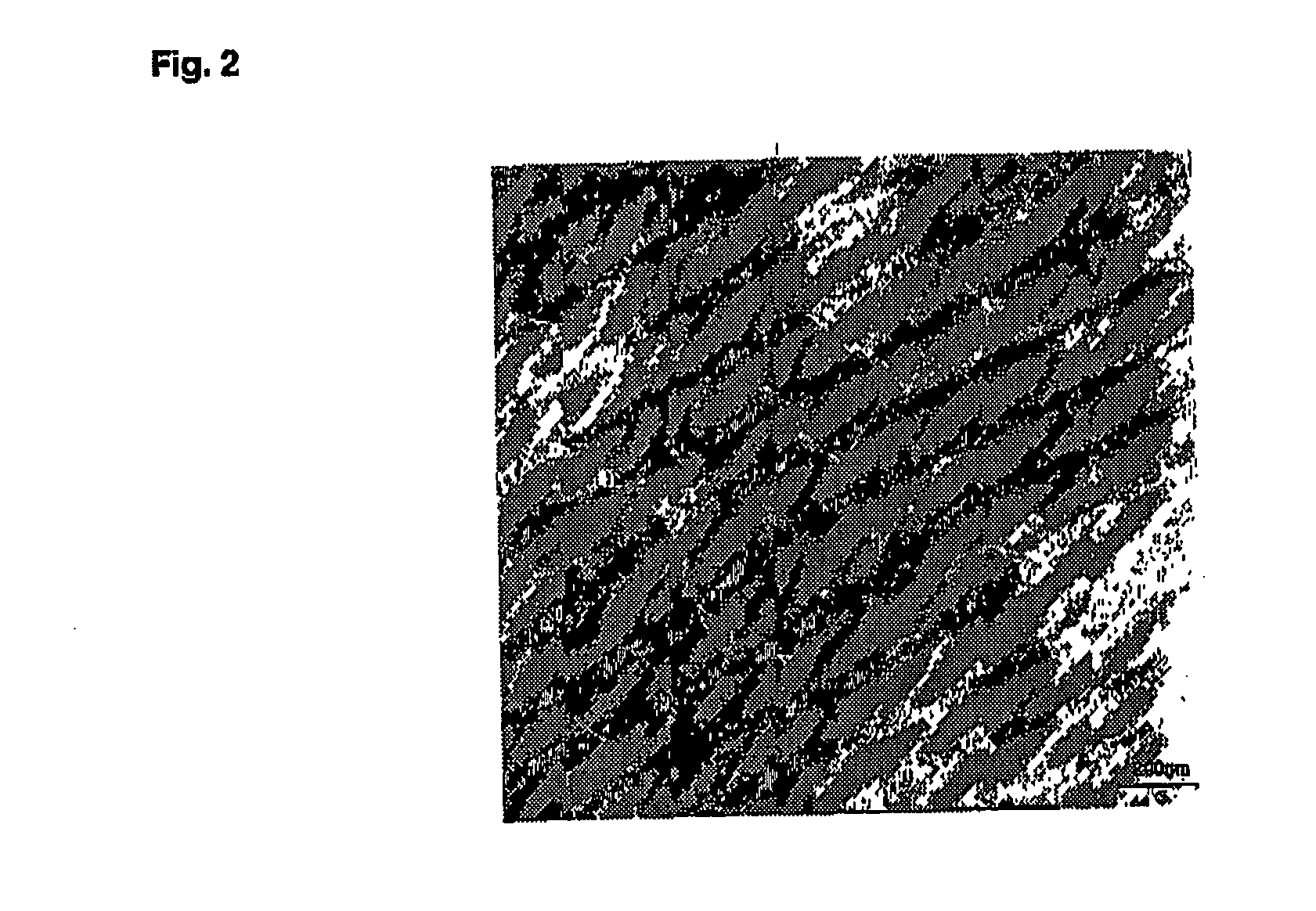Process for preparing a nanosized zeolitic material
- Summary
- Abstract
- Description
- Claims
- Application Information
AI Technical Summary
Benefits of technology
Problems solved by technology
Method used
Image
Examples
example 1
TS-1
Example 1.1
Synthesis of Nanosized Zeolite TS-1 According to the Invention
[0297] The titanosilicate gels were prepared by mixing 5 mL of TPAOH (tetrapropylammonium hydroxide) aqueous solution (25%) with 5 mL of H2O, followed by addition of 0.3 mL of Ti(OC4H9)4 and 5 mL of TEOS (tetraethoxysilane) under stirring (TiO2 / SiO2 / TPAOH / C2H5OH / H2O molar ratios of 1.0 / 30 / 8 / 120 / 375). The mixture was then aged at 140° C. for 3 hours. 5 mL of polymer spheroidal dispersion ( ) was mixed with 5 mL of titanosilicate gels obtained in step 1. The mixture was stirred at room temperature for 4 h, then transferred into ad autoclave for additional reaction at 140° C. for 96 h. The final product prepared from the titanosilicate gel was collected by filtration, washed several times, dried in air, and calcined at 500° C. for 4 hours.
[0298] The Si / Ti ratio of nanosized TS-1 is 85, determined via ICP (Perkin-Elmer 3300 DV).
[0299] The polymer dispersion employed had the following characteristics:
Mono...
example 1.2
Synthesis of Nanosized Zeolite TS-1 According to the Prior Art
[0302] The titanosilicate gel was prepared by mixing 5 mL of TPAOH aqueous solution (25%) with 5 mL of H2O, followed by addition of 0.3 mL of Ti(OC4H9)4 and 5 mL of TEOS under stirring (TiO2 / SiO2 / TPAOH / C2H5OH / H2O molar ratios of 1.0 / 30 / 8 / 120 / 375). The mixture is then aged at 140° C. for 5 days.
[0303] Si / Ti ratio of conventional TS-1 is 40, determined via ICP (Perkin-Elmer 3300 DV).
example 1.3
Test of Catalytic Activities of Zeolites TS-1 According to Example 1.1 and According to Example 1.2; Conversion of Phenol by Reaction with Hydrogen Peroxide
[0304] Reaction conditions: water was used as a solvent, reaction temperature at 80° C., phenol / H2O2=3 / 1 (molar ratio), reaction time 4 h, 0.02 g catalyst and 0.05 g catalyst were employed for different runs, in each case TS-1 catalyst according to the invention and conventional TS-1 being compared. The products found were catechol, hydroquinone, and benzoquinone. The product of tar is not included. Hydrogen peroxide was used as 30 wt.-% aqueous solution (see FIGS. 6 and 7).
PUM
 Login to View More
Login to View More Abstract
Description
Claims
Application Information
 Login to View More
Login to View More - R&D
- Intellectual Property
- Life Sciences
- Materials
- Tech Scout
- Unparalleled Data Quality
- Higher Quality Content
- 60% Fewer Hallucinations
Browse by: Latest US Patents, China's latest patents, Technical Efficacy Thesaurus, Application Domain, Technology Topic, Popular Technical Reports.
© 2025 PatSnap. All rights reserved.Legal|Privacy policy|Modern Slavery Act Transparency Statement|Sitemap|About US| Contact US: help@patsnap.com



